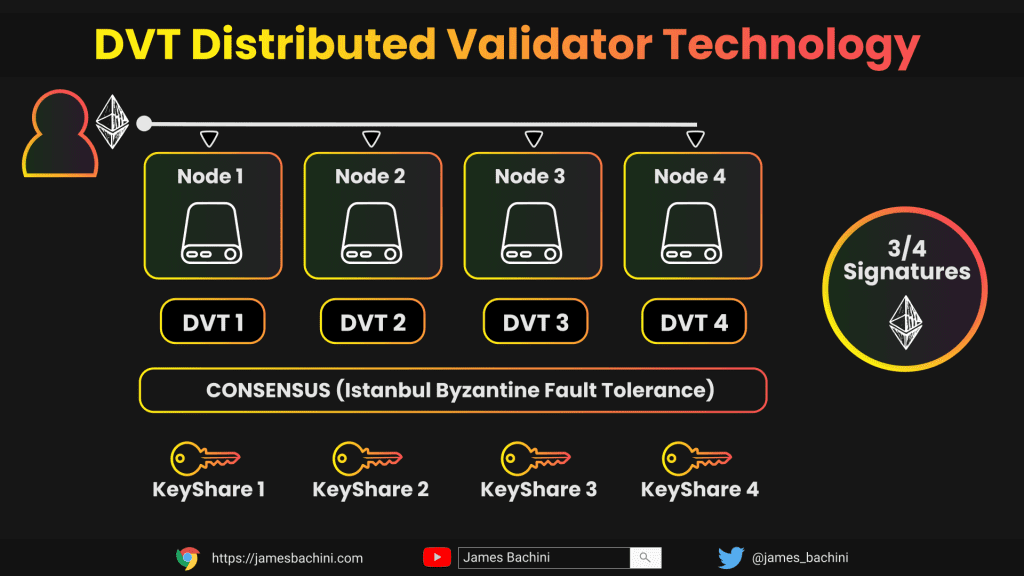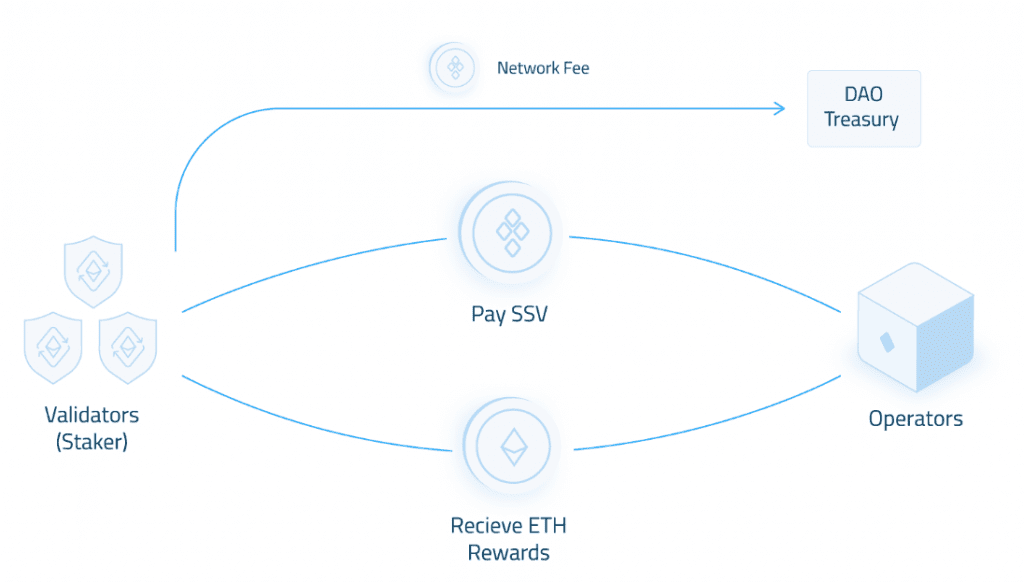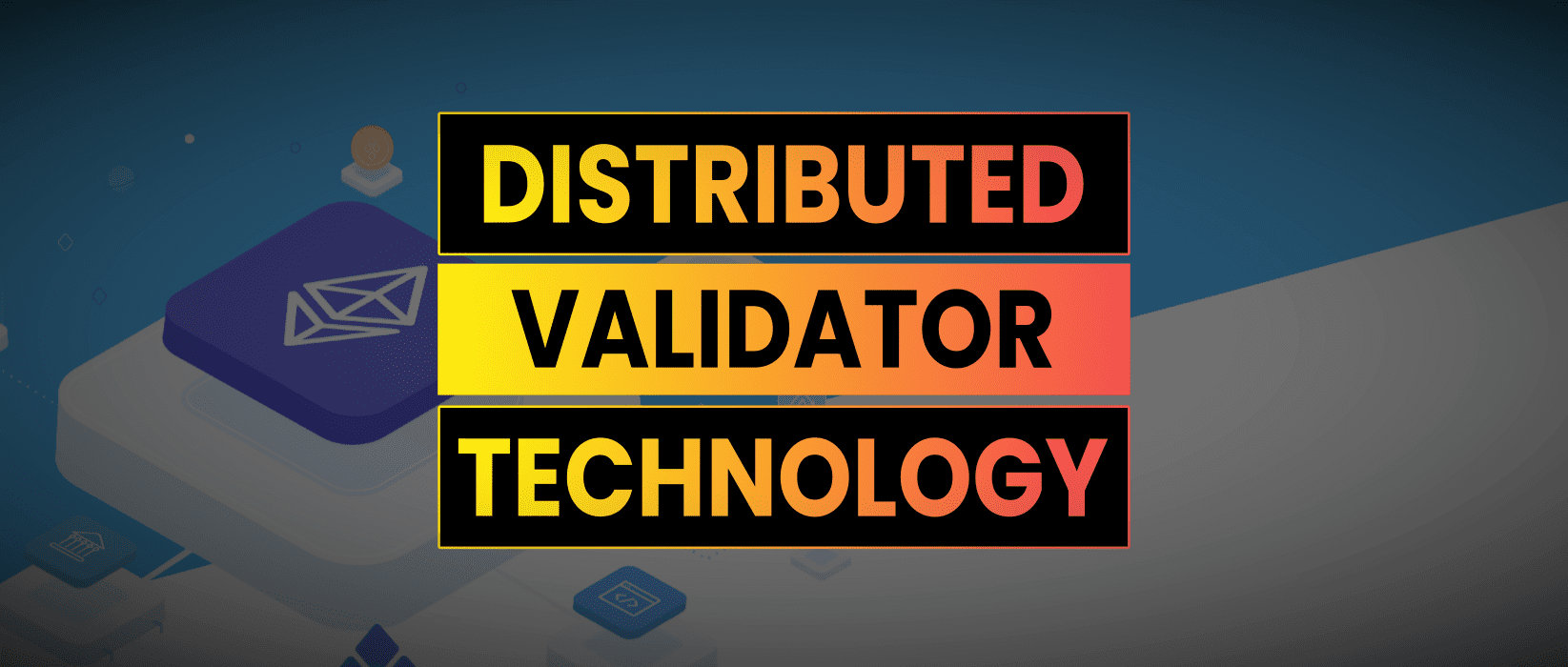Distributed Validator Technology (DVT) enables a group of network validators, in a proof of stake system such as Ethereum, to act as a single validator.
This can create a form of decentralized staking solution for the network which is more censorship resilient and secure.
What Is DVT?
The role of providing a consensus mechanism has shifted from miners to validators in the PoS (Proof of Stake) model. Validators receive a reward in ETH if their attestation or block proposal is timely and accurate.
To date the majority of ETH stakers are opting for staking services with 3rd party validators due to the complex nature of setting up and maintaining a network node.
There are two key risk for validators staking funds on a PoS network:
- Key theft leading to loss of funds
- Node failure leading to slashing
The majority of staked ETH is currently deposited with liquid staking derivatives such as Lido Finance and exchanges such as Binance & Coinbase. These use centralized validator network to stake the ETH on clients behalf.
Distributed Validator Technology is an open-source protocol that represents an alternative to custodial staking solutions.
How DVT Works
DVT works like a multi-signature wallet for running a validator node. It avoids having a single point of failure in the architecture or ownership that could result in loss of funds or slashing penalties.
Behind the scenes there are 4 mechanisms which enable this technology:
- Distributed Key Generation – splits the private validator key into as many parts as there are participants in the consensus group
- Multi-Party Computation – allows the reconstruction of the private key without requiring the knowledge of every key share
- Shamir’s Secret Sharing – enables the cluster of operators to sign messages and perform computations without rebuilding the complete private key on a single device
- Istanbul Byzantine Fault Tolerance – is utilised in a DVT set up to establish a consensus on a block by designating one Beacon node as the leader

DVT minimises the risks associated with staking and providing funds to a validator to stake on your behalf, while reducing network centralization risks and improving the security of the validator ecosystem.
There is a spec for distributed validators in the Ethereum Github repo: https://github.com/ethereum/distributed-validator-specs
Who Is Building With DVT?
SSV.Network
SSV.network is a project building a decentralized ETH staking network that uses Secret Shared Validator technology (a form of DVT). It splits and distributes a validator key into multiple KeyShares to run an Ethereum validator across multiple non-trusting nodes.
This approach provides redundancy, fault tolerance, non-custodial and secure ETH staking and promotes decentralization and diversity.
SSV allows independent operators worldwide to choose their own validator client software and hardware infrastructure, while stakers can choose their own independent operators to run their validators.

More information available at: https://docs.ssv.network/
The SSV token functions as a governance token and the network’s payment layer to align stakeholders interests. It is used to compensate operators for their services and as the payment layer of the SSV network. SSV tokens are required as collateral to avoid potential liquidation and stakers can opt-out at any time and retrieve their unused SSV balance.
Stakers can choose multiple operators to manage their validators and the fee is distributed continuously to operators with each passing block. Stakers can also redistribute their KeyShares to different operators to reduce their costs.

Note. SSV did not sponsor this post and at time of writing I currently don’t hold any stake in the project. Although they did give me a lovely beanie when it was -5’c at ethDenver which I’m very grateful for.

Obol Labs
Obol Labs is developing the Obol Network, a protocol that promotes trust-minimized staking through DVT.
The Obol Network is a work layer that sits directly on top of the base layer consensus to increase resiliency and promote decentralization as it scales. The team believes that the next great scaling challenge for Ethereum will be staking centralization, which can be effectively mitigated through DVT.
Obol aims to scale consensus by providing permissionless access to distributed validators. The project currently uses a middleware implementation of DVT to enable the operation of distributed validator clusters that can preserve validators’ current client and remote signing infrastructure.

Obol aims to become an open, community-governed, self-sustaining project.
More information is available at: https://docs.obol.tech/
The team envisions two key versions of distributed validators:
Trusted Distributed Validators will have dispute resolution out of band, and individuals and staking-as-a-service providers can deploy DVs to make their validators fault-tolerant.
Trustless Distributed Validators will layer in an incentivization scheme to ensure any operator not online and taking part in validation is not earning any rewards.
Obol Labs is building a DVT solution that aims to evolve into a widely used primitive that ensures the security, resiliency, and decentralization of blockchain networks.
There is no token and all economics are handled in ETH.
Conclusion
There is potential for distributed validator technology to play an important role in the future of Ethereum’s validator network.
By creating a distributed network of validator nodes we can create more decentralized options for stakers that don’t want to run their own hardware.
The technology is compelling and fee revenues could create a significant layer 0 economy with sustainable tokenomics for a DVT project that gains significant traction. SSV is the current market leader and it will be interesting to monitor how much traction they can gain in the space.


